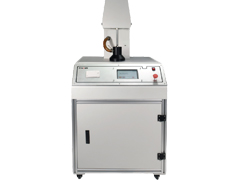Products
News
Contact
- Qinsun Instruments Co., Ltd.
- Tell:+86-21-6780 0179
- Phone:+86-17740808215
- Address:No. 2578 Minhang District Gu Dai Road, Shanghai
- Contact:Mr. Li
- QQ:846490659
Mask filter efficiency and ventilation resistance test standard

Masks can absorb and block harmful aerosols such as smoke, fog, dust, bacteria, etc., help the human body isolate harmful substances, and purify the air inhaled by the human body. Mask filtration efficiency and ventilation resistance performance Masks used for different purposes have different design requirements and quality evaluation indicators.
1. Filtration efficiency
According to the definition of GB2626-2006, filter efficiency refers to the percentage of particulate matter removed by the filter element under specified detection conditions. This index is the fundamental element that determines the performance indicators of medical surgical masks.
Item 4.6 of the YY0469-2011 standard requires that the bacterial filtration efficiency (BFE) of medical surgical masks should not be less than 95%, and the filtration efficiency (PFE) of non-oily particles should not be less than 30%.
Classical filtration theory points out that the filtration mechanisms that play a major role in the filtration efficiency of mask materials are interception effect, inertial effect, diffusion effect, gravity effect and electrostatic effect. Due to the existence of the combined effect of the five effects, it is not that the smaller the particle, the more difficult it is to filter out. Therefore, only the most penetrating particles can be used for testing to faithfully reflect the filtration efficiency of the filter material.
There are many different types of filter materials. For example, gauze masks use ordinary degreased gauze or ordinary gauze as the filter material, non-woven masks use melt blown fiber, charged melt blown fiber and other non-woven fabrics as the filter material, and composite masks are a variety of filters. Composite materials, such as carbon fiber, non-woven fabric and gauze composite.
The filtration efficiency of gauze is low, and the resistance is also low, while the filtration efficiency and resistance range of general non-woven fabrics are respectively 2.8%-99.8% and 9-157 Pa; the filtration efficiency and resistance range of some electret masks are respectively It is 80.6%~99.9%, 4~72 Pa.
Microorganisms such as bacteria and viruses do not exist alone in the air. They attach to dust and droplets to form aerosols. The filtering mechanism of the filter material for particulate matter is also applicable to microorganisms.
For products with unqualified bacterial filtration efficiency, the particle filtration efficiency may not be qualified, because the mechanism of the filter material is the result of the combined effect of the five effects.
2. Pressure difference
In addition to providing effective protection, the wearing of masks should also make the wearer feel comfortable. Therefore, the technical indicators in the second edition of the standard for medical surgical masks all involve gas exchange items.
Compared with the YY0469-2004 standard, YY0469-2011 modified the gas exchange technical requirements and test methods, and only retained the pressure difference item.
In the 2011 version of the standard, item 4.7 requires testing at a flow rate of 8 L/min, and the pressure difference Δp between the two sides of the mask for gas exchange is not greater than 49 Pa.
The difference of filter materials determines the test results of filtration efficiency. Enterprises should consider their comprehensive performance indicators when selecting filter materials, and cannot blindly pursue filtration efficiency while ignoring the pressure difference (comfort).
Therefore, choosing a suitable filter material is a prerequisite for the production of a qualified mask. It is recommended that manufacturers choose suitable filter materials when producing masks. Not only should the filter efficiency of the filter material be considered, but also its resistance performance should be considered.
To learn more about the filter efficiency and ventilation resistance testing standards of masks, please follow our official website: https://www.testerinlab.com/





